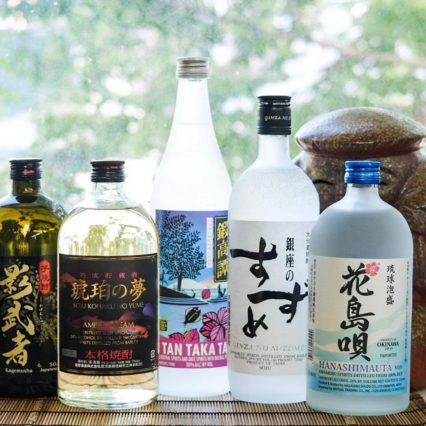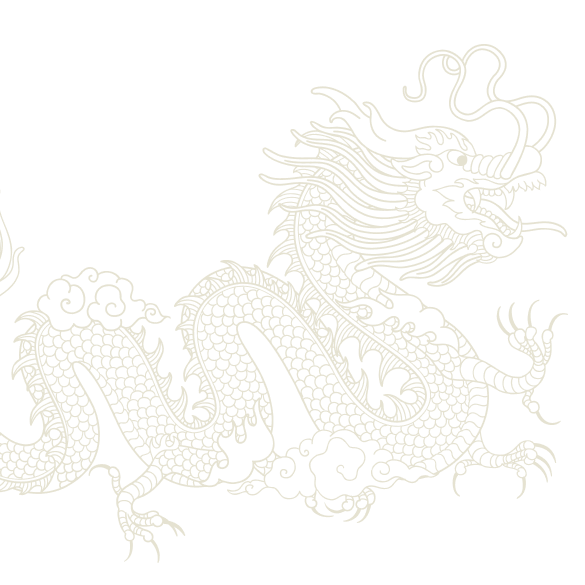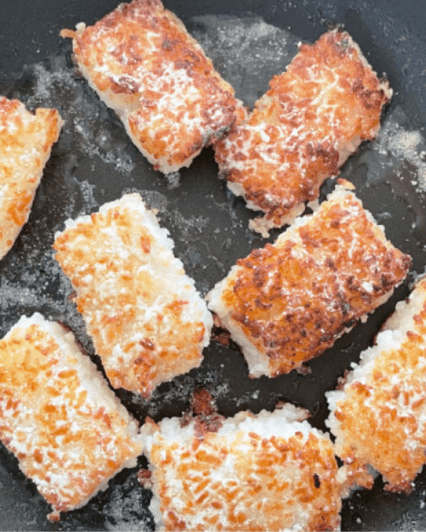Introduction to Shōchū (焼酎)

Introduction to Shōchū (焼酎)
Shōchū can be made from a variety of grains and starches, the most common being rice, barley, buckwheat, brown sugar or sweet potato; each imparting a distinct flavor and aroma to the finished product. With the rise in popularity of shōchū, certain regions of the country have created geographical designations, such as Kagoshima’s Satsuma (sweet potato) shōchū (薩摩焼酎) and Iki (barley) shōchū (壱岐焼酎) from Nagasaki prefecture.
Often confused with shōchū, soju is a distilled spirit brewed in Korea.
According to Japanese law, there are two types of shōchū, otsurui single distillation and kōrui multiple distillation.
Because it is distilled once, otsurui shōchū retains more of the flavors from the ingredients from which it was brewed. These shōchū can be enjoyed neat or on the rocks to highlight their distinct flavor profile.
Kōrui shōchū is brewed using modern stills that extract a higher alcohol product with a neutral flavor. Kōrui shōchū is often the base for cocktails or liqueurs such as umeshu (plum wine).
When shopping for shōchū here are some of the common terms you may come across:
Awamori (泡盛) – a rice shōchū brewed from long-grain rice and kōji mold unique to the island of Okinawa. Ryūkyū Awamori (琉球泡盛) is a geographical indication for awamori brewed on Okinawa.
Chuhai (チューハイ) – a contraction of “Shōchū Highball,” the chuhai is a popular fruit cocktail. Easy to make at home (1 part shōchū, 1 part fruit juice, 3 parts club soda), chuhai also comes in a variety of flavors in ready-to-drink cans.
Genshu (原酒) – undiluted shōchū. No water is added to the distilled shōchū, resulting in a stronger, sometimes harsher, flavor.
Honkaku Shōchū (本格焼酎) – translated as “Authentic” or “Original,” this is another term that is often used for Otsurui shōchū (see below).
Imojōchū (芋焼酎), Sweet Potato Shōchū – shōchū brewed from sweet potatoes can have stronger, sometimes smokey, flavors, drawing comparisons to whiskey. Kagoshima and Miyazaki prefectures have some of the oldest and renowned shōchū breweries.
Komejōchū (米焼酎), Rice Shōchū – shōchū brewed from short grain rice. Akita, Niigata and Kumamoto prefectures are particularly known for their rice shōchū.
Mugishōchū (麦焼酎), Barley Shōchū – with a milder flavor profile than other shōchū, barley shōchū has a reputation as easy to drink. Ōita, Miyazaki, and Nagasaki prefectures are particularly known for their barley shōchū.
Shōchū Otsurui (焼酎乙類) Single Distillation Shōchū – sometimes abbreviated as Otsushū (乙焼). Typically with an alcohol content around 25%
Shōchū Kōrui (焼酎甲類) Multiple Distillation Shōchū – sometimes abbreviated to Kōshū (甲焼), kōrui shōchū can have alcohol content up to 35-40% and is often sold in large cartons for use in home liqueur production.
Sobajōchū (そば焼酎) Buckwheat Shōchū – with a mild flavor, buckwheat shōchū is often found in blended shōchū. Buckwheat shōchū is a relative newcomer, first being brewed in the 1970s in Miyazaki prefecture.




